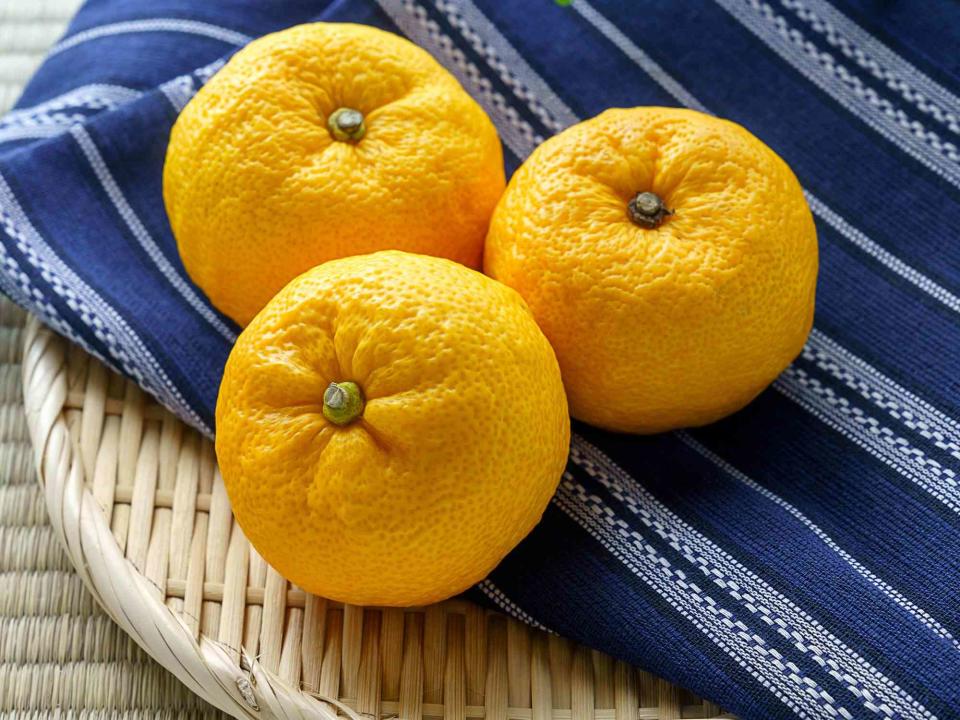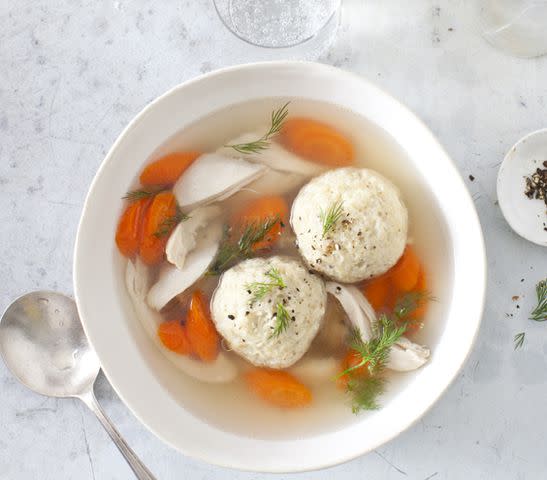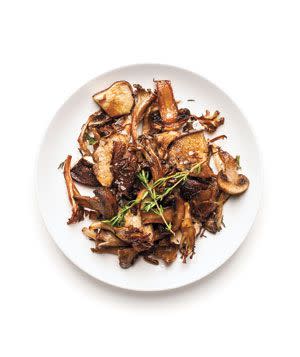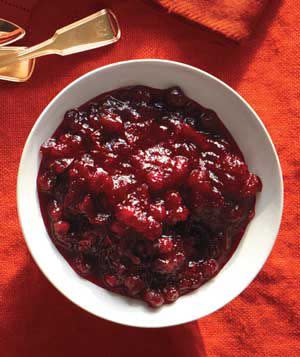What Is Yuzu? Learn How to Cook With it, Store It, and More
Does yuzu confuse you? Professional chefs clarify, plus ways to bring this bright Asian citrus fruit into your life.

If you're wondering, "What is yuzu?" you're not alone. The popularity of this bright yellow citrus fruit is growing in the U.S., yet it's still a mystery to many of us. The short answer is that yuzu (pronounced YOU-zoo) looks like a lemon but has a distinct flavor and potent aroma.
For a more comprehensive answer, we consulted a bevy of culinary pros to find out more about yuzu and learn how they use the enigmatic fruit in their dishes. There's much more to discover about yuzu: its nutritional benefits, how to find it and store it, and how to replicate its flavor if you can't find it. Read on for recipes and more about this exotic citrus fruit that's surging in the culinary world.
Yuzu Basics
Yuzu is a citrus fruit that originated in east Asia and grows wild in central China and Tibet. It was introduced to Japan and Korea during China's Tang dynasty (618 to 907), and is still cultivated there today. More recently, yuzu has been grown in California—as well as Australia, Spain, Italy, and France—and is used in Korean cuisine, too (called yuja).
Larger than a mandarin orange but smaller than a grapefruit, yuzu's uneven skin is typically yellow or green, depending on its ripeness. Inside, yuzu flesh is similar to a lemon's and is very aromatic. Rarely eaten as a whole fruit, yuzu is mostly used for its zest and juice.
"Yuzu plays such a pivotal role in Japanese cuisine and now, in recent times, it has become an integral ingredient in so many other cuisines and cultures," explains Min Kim, executive chef at Wynn Las Vegas' Mizumi. "It has such a significant value in our culture, not only as a cooking ingredient, but as something that is so fundamental in our daily lives."
"In Japan, yuzu is used for so much more than just cooking." Kim continues. "We use it to make tea, medicine, fragrances, bath products, candles, and more."
What Yuzu Tastes Like
"Fresh yuzu has a distinctive tart, fragrant, and sour taste that almost resembles grapefruit, mandarin orange, or lemon," according to Kim. "It has a magical fragrance and flavor that enhances the taste of any dish, which allows it to work well with just about anything."
"The flavor of yuzu can be described as grapefruit-y and lemony with a hint of mandarin orange, says Claudia Fleming, cookbook author and executive pastry director of Union Square Hospitality Group. "It is very complex, distinctive, and highly aromatic."
Shige Kabashima, owner and bar director of NR, a New York City bar, agrees. "Yuzu tastes like lemon, grapefruit, and mandarin orange and is very aromatic," he says.
"[Yuzu] has notes of orange and grapefruit," adds Chef Niven Patel, of Miami-based restaurants Orno and Mamey. "I think that it does a great job of adding a tart, sour flavor."
Nutritional Benefits of Yuzu
Yuzu has nutritional perks worth noting. For starters, it's packed with sodium, magnesium, and manganese. As you'd expect of a member of the citrus family, it's also a good source of vitamin C, which increases the body's excretion of uric acid and can help prevent gout. This key nutrient may also improve eye health, and may even slow the progress of age-related macular degeneration.
How to Store Yuzu
You can leave whole yuzu fruits on the kitchen counter at room temperature, but if you don't plan on using them right away, refrigeration helps them last longer. While they stay fresh in the frig for a few weeks, yuzu may lose their powerful aroma after a few days.
To extend their life, you can freeze yuzus whole, or you can freeze the yuzu peel, flesh, and juice separately. Yuzu skin and flesh last for up to a month in the freezer, while its juice stays fresh for about six months.
If you're a fan of bottled yuzu condiments like Trader Joe's Yuzu Hot Sauce ($11, amazon), they stay fresh in the refrigerator for several weeks, if not longer. Nevertheless, always check the sell-by date and give it a sniff to be safe.
Cooking With Yuzu
Despite yuzu's distinct flavor, it's actually quite versatile in the kitchen. "I still remember the first time I tried yuzu," reminisces chef Gabriel Kreuther, owner of a self-titled restaurant in New York City. "A friend had just returned from Japan with it. The smell alone was so different from what I knew before. It was a true discovery, an inspiration." Here are just a few ways to introduce yuzu into your cooking.
Finish With Zest
"The juice is very good, but it's the zest that's really special," Kreuther says. "The elegance of it is really cool, and the length on your palate is surprising. It's not sour like a regular lemon… it's like a mix of three or four different citrus fruits—lemon, lime, mandarin, and grapefruit in one! I use it in my kitchen to finish dishes, as opposed to heating it, to give it justice."
Pair With Protein
Other chefs call on yuzu to play a more central role in their dishes by pairing it with various proteins. "Typically I like to pair it with a fatty dish, like pork belly or wagyu," offers Kim, "but it also complements fresh seafood—especially sashimi and sushi—brilliantly, by adding a touch of fresh citrus tang and aroma on your nose."
Add Vigor to Veggies
"I love cooking yuzu with fresh vegetables from the farm," says Patel, "as it has a tart and sweet flavor profile that adds a citrusy note to fresh produce." Use it on vegetables directly or in a vinaigrette or marinade.
Replace Lemon or Lime
"Yuzu works well in any dishes in which you might normally use lemon or lime," explains Karen M. Ricks, the head chef at Our Kitchen Classroom, yet her recommendation comes with caveats. Yuzu is best for dishes that require a more complex flavor profile, such as in Japanese cuisine, while lemon has a more straightforward sourness. Also, yuzu does not tolerate high heat, such as in grilling and roasting, as well as lemons and limes do.
Add to Beverages
A good way to give yuzu a try is to add yuzu juice to a tropical cocktail. Pair it with gin and simple syrup for an easy libation, or add it to a margarita for an interesting take on a classic drink. If you're in the mood for a non-alcoholic drink, add some yuzu juice to a pitcher of lemonade.
Finding Yuzu
Now that we have your mouth watering at the prospect of getting your hands on some yuzu fruit, you're unlikely to find it at your local grocers. That's because its import to the U.S. is banned to prevent the spread of citrus disease.
Your best bet for purchasing fresh yuzu is from small growers in California, where it's grown in winter. Fortunately, bottled yuzu juice is more widely available online as well as in Asian markets.
Subbing for Yuzu
If you can't find yuzu, you can achieve a close alternative using similar fruits. "While it's difficult to substitute for the exact flavor, a combination of lemon, grapefruit, orange, and lime juices could yield a similar flavor profile if for any reason yuzu isn't readily available," suggests Fleming.
Kreuther has a similar approach to substituting yuzu, adding: "If you can't find yuzu, I suggest using Meyer lemon juice with a dash of grapefruit (say, 15 percent of the total volume). Buddha's Hand [another Asian citrus fruit] can also be a great one to try in yuzu's place!"
Yuzu Recipes
One of the most versatile ingredients around, it's easy to add yuzu to a variety of drinks and dishes. Keep reading for chef-approved tips on how to add yuzu to some of your favorite dishes or try adding it to our recipes.
Sparkling Lemonade Mixed Drinks

Touting the versatility of yuzu, Kabashima notes its use in sushi, meat, fish, and vegetable dishes in Japan but, "It can also widely be used in drinks as well. In cocktails, it goes especially well with gin, honey, and shiso leaf." Try adding yuzu juice to one of our sparkling lemonade mixed drink recipes.
Oysters
"I take briny and fat fresh oysters and spike them with a little yuzu zest and juice, instead of the traditional vinegar and shallot accompaniment," says Kreuther. Pick up some oysters at your local fish market, shuck 'em yourself if you're feeling adventurous, and take a page right out of Kreuther's book.
Matzo Ball Soup

"A nice matzo ball soup is transformed with yuzu juice and a little zest," Kreuther says. "It takes even a store-bought version to new heights!" Try adding yuzu next time you pull out our matzo ball soup recipe.
Crispy Roasted Mushrooms

Chef Patel likes to pair yuzu with vegetables. "At Orno, we use it in the roasted mushrooms, which includes black truffle butter, yuzu, and fine herbs," he shares. "The roasted mushrooms have a lot of fat with a very decadent black truffle butter, so the yuzu balances it out with acidity and sour flavor."
Add some yuzu to our crispy roasted mushrooms for a flavor boost. Throw in some truffle butter if you're feeling particularly fancy.
Watermelon Poke Bowls

"I use yuzu juice when preparing my albacore poke dish, a light and refreshing crowd-pleaser made with sashimi-grade tuna," says executive chef Kevin Templeton, from barleymash restaurant in San Diego. "The dish also consists of soy sauce, rice wine vinegar, brown sugar, diced cucumber, green onion, sesame seeds, avocado, fresh cilantro, wonton crisps, sesame crackers, and cucumber slices."
Follow Templeton's suggestion and add yuzu juice the next time you order poke for takeout. Staying in? Try our plant-based version of a poke bowl that swaps the traditional tuna with watermelon, which pairs well with yuzu, too.
Bourbon-Cranberry Compote

"Yuzu pairs particularly well with tropical flavors and citrus fruit, adding a faint herby element to finished dishes," shares Fleming. "It is a bit sour and slightly bitter, which makes it a great counterpoint to sweet-acidic desserts."
"This past summer, while testing for my new cookbook, I added yuzu juice to a plum compote and flavored buttermilk panna cotta with it," Fleming continued. "I was delighted with the result!" Follow Fleming's lead by adding yuzu when whipping up our bourbon-cranberry compote.
Classic Cheesecake

"When it comes to desserts and pastries, yuzu is a unique fruit that can add an unexpected flavor that almost always delights," says Federico Fernandez, co-owner and executive pastry chef of Bianca in Los Angeles. "Yuzu can be worked into crème brûlée, cheesecakes, pie, and so much more." Upgrade our classic cheesecake recipe by adding a dash of yuzu juice to the batter.
Easy Sugar Cookie Dough

While Ricks notes that yuzu thrives in savory dishes—like chicken and rice and sautéed vegetables—one of her favorite ways to use it is when making dessert. "It brightens the flavors of sweet dishes like cookies, cupcakes, and cheesecakes!" she adds. The next time you make sugar cookies, try grating some yuzu zest into the dough for a citrusy twist.
For more Real Simple news, make sure to sign up for our newsletter!
Read the original article on Real Simple.

